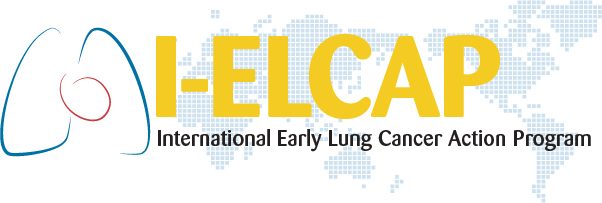Previous Meetings
The 8th International Conference on Screening for Lung Cancer
Friday, April 25, 2003 to Sunday, April 27, 2003
Clinica Universitaria de Navarra
Pamplona
Spain
Agenda: 8th Conference Agenda
Mission:
The broadest mission of these Conferences is the collective pursuit of avant-garde understanding of the issues surrounding screening for lung cancer, the broadest subissues being early diagnosis and early intervention. Any given Conference focuses on issues that are particularly topical at the time.
As always, the Conference will provide an update on research and practice of screening for lung cancer. The Seventh Conference focused on the prognosis of screen-diagnosed cancers — that is, their significance in terms of subsequent course without and with treatment. The results of the Expert Pathology Panel review were presented and it was concluded that malignancy diagnoses on baseline screening do represent genuine malignancies, ones that would be fatal if not resected. This Eighth Conference will focus on various issues of screening protocol and its performance, and also developments towards intervention research.
Consensus Statement:
This conference re-emphasized the two missions of the International Early Lung Cancer Action Program (I-ELCAP) consortium which are to advance policy-relevant research on early diagnosis of lung cancer and to foster translation of up-to-date evidence into guidelines for practice. To these ends, we foster strong ties among all other interested organizations. In line with its research mission, I-ELCAP collects data on CT screening for lung cancer under a common protocol and it pools these data for overall analyses. The reduction in lung cancer deaths resulting from early interventions following early diagnoses of lung cancer is assessed in part by follow-up of both resected cases of lung cancer and those early cases that are unresected.
The I-ELCAP experience with over 18,000 baseline screenings and 11,000 repeat screenings was presented. The focus at this meeting was on those data on which protocol updates were based. By the time of the next meeting the additional data to over 25,000 baseline and over 15,000 repeat screenings. These updates dealt with the definition of a positive result of the initial CT, indications for biopsy, and growth assessment. The definition of a positive result of the initial CT on baseline screening was refined to be any solid or part-solid non-calcified nodule 5.0 mm or more in diameter or any nonsolid nodule 10 mm or more in diameter. The protocol for the work-up of a positive result of the initial CT on baseline was also changed. Immediate biopsy is no longer preferred option for non-calcified nodules less than 15 mm in diameter; instead, 3-month follow-up CT showing growth or positive PET scan will prompt biopsy. On the other hand, the definition of a positive result of the CT on annual repeat screening and its work-up remained unchanged.
The I-ELCAP teaching and evaluation subcommittee, chaired by Dr. Dorith Shaham, presented the current version of the teaching file and the plans for future updates, including opportunities for self-evaluation testing. I-ELCAP members were encouraged to submit cases for inclusion in the teaching file. In one session, I-ELCAP cases were presented with detailed imaging and pathologic findings. Questions which have been raised about the promise of CT screening were addressed. These included concerns about the extent of the diagnostic workload, radiation doses associated with screening, the risks of unnecessary invasive biopsy and thoracotomy, and the putative lack of a size-stage correlation among small screen-diagnosed cancers. It was the sense of the conference that these concerns have been overstated in recent public discourse.
A proposed structure for the development of I-ELCAP biomarker repositories was presented. It was suggested that such a project may be an excellent opportunity for collaboration between the already funded EU project led by Drs. Brambilla and Field. Further details of such collaboration are to be provided at the next conference. The significance of such a collaboration in further identifying subtypes of diagnosed lung cancer based on radiologic, pathologic and biomarker findings was stressed, particularly in light of emerging treatment alternatives (e.g., conformal radiation, radiofrequency ablation, chemoprevention). Literature emerging from the extensive Japanese surgical experience on screen-diagnosed lung cancers shows that for some cases, relatively conservative treatment for screen-diagnosed lung cancers might well be used.
The scientific presentations on the second day stimulated much discussion and continued to highlight many important points. It was again confirmed that they continue to be an important part of the meeting.
